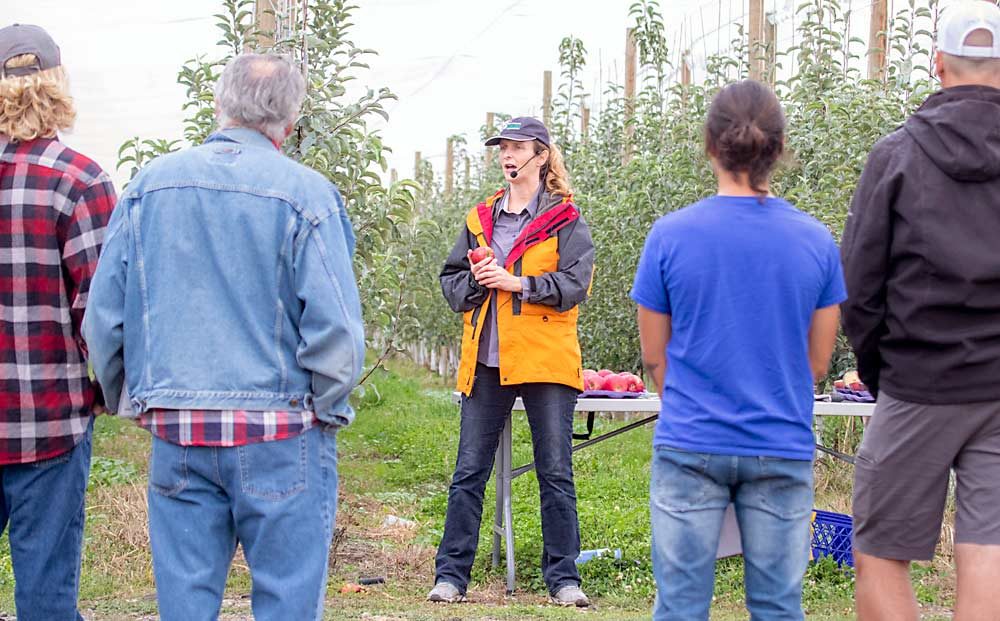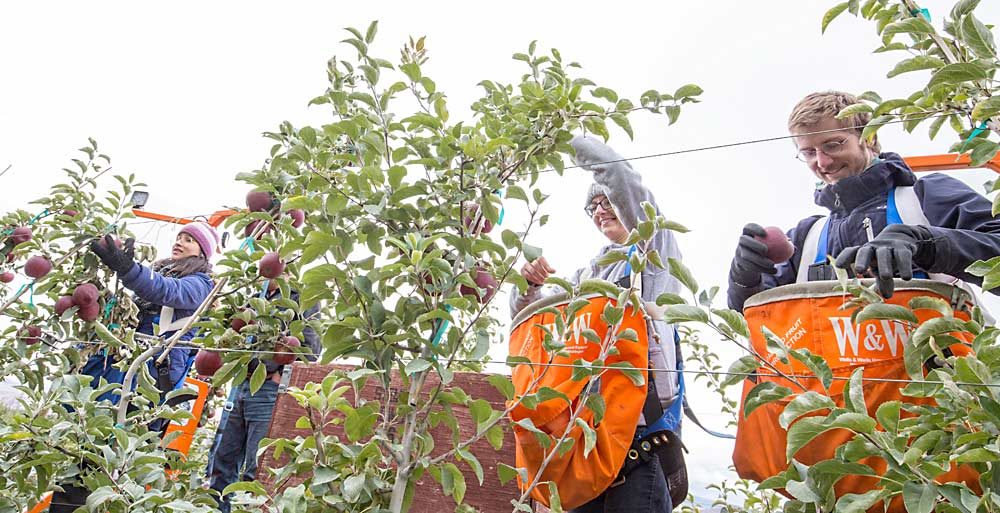
This past year, the Washington Tree Fruit Research Commission celebrated 50 years of providing science-based solutions for an innovative and profitable tree fruit industry.
Since 1969, the commission has invested more than $120 million, funding more than 800 individual research projects led by more than 300 research and extension professionals. Results from these investments in industry priority areas have significantly increased productivity, improved product quality and helped growers stay economically viable in a globally competitive marketplace.
This focus on addressing producers’ needs is key to the commission’s success, according to Jim McFerson, former WTFRC manager.
“The commission’s board of directors and crop-specific committees have consistently supported research and extension activities that address industry priorities. Our internal program has always emphasized direct stakeholder involvement by working in grower-cooperator orchards in partnership with WSU and USDA-ARS scientists,” McFerson said. “At the same time, the commission has strongly supported more basic research, conducted worldwide, to enable the next level of innovative technologies.”
We highlighted three of those innovative and widely adopted technologies in recent issues of Good Fruit Grower.
In June, it was reported by Mike Willett, retired WTFRC manager, that because of grower investment in research, mating disruption has been successfully implemented in 90 percent of all apple and pear orchards in the Pacific Northwest, enabling long-term control of codling moth. This investment accelerated the rate of adoption, reduced chemical spray needs and fostered expanded organic production.
In the August issue, Tory Schmidt, longtime WTFRC project manager, summarized the application of crop load management research on bloom and postbloom thinning to improve productivity, overall fruit quality and consistent annual bearing.
Finally, in the October issue, Jim Mattheis of the U.S. Department of Agriculture’s Agricultural Research Service detailed the extraordinary success of the ripening inhibitor 1-methylcyclopropene (1-MCP) to enhance the year-round supply of high-quality apples.
Looking ahead
It is my great honor and privilege to assume the role of executive director of the WTFRC. In our 50-year history, only three people have filled this role, raising the bar very high with their work shaping this organization into a vital public-private partnership.
As we develop a vision to move forward, we recognize there are challenges: The public is largely removed from and ignorant of the realities of production agriculture; we face a dwindling workforce; and we have a never-ending chain of new rules and regulations, only some of which are based on real threats to food security.
One of our priorities is to expedite the implementation of new technology into orchards. Ultimately, it will become possible to develop affordable, high-quality automated systems, such as harvest robots and autonomous crop protection tools. At the same time, we recognize the vital importance of continually developing and implementing orchard best management practices to both reduce labor demands and improve fruit quality.
Priority areas include:
—Optimizing two-dimensional orchard architectures.
—Tracking all aspects of orchard growth, development and management throughout the year using sensors, vision systems, satellite information, soil monitors, weather data, predictive models and other tools.
—Enhancing data analysis capability and modeling to enable timely and accurate decisions on maintenance, precision spraying and workforce planning.
Providing affordable tools and methods to growers large and small, conventional and organic, is at the core of this mission and it will contribute to maintaining and/or building profitable and sustainable businesses.
To successfully start implementation of new technology, we also need young people.
“We need to share what we know, we need to mentor the incoming next generation, but we also need to trust that they can carry us into the future,” said Teah Smith, commission board member. “It is absolutely critical to have more young people involved. All they know is technology. They were born to do this, they were born to move fast, to be innovative, and they will move us into the future because they know this technology.”

As in the past, the WTFRC will attack current and future challenges of tree fruit producers by staying engaged with all sectors of the industry, collaborating closely with other tree fruit industry organizations, facilitating research projects in real-world settings and effectively engaging with a new generation of professionals. In fact, Smith believes the future has already started. “It is underway, because of grower investments in the research programs that we have in place right now,” she said.
These investments in research and extension will allow our producers to adopt new systems to grow fruit in ways that will enable us to take full advantage of mechanization, automation and the adoption of robotics. They will allow us to be the best stewards of all resources.
Continued innovation will require active involvement of the next generation of professionals to bring new outlooks and energy to our industry. This continued commitment of human and financial resources will permit us to craft the best vision for the future.
The foundation of the commission’s success is our core mission: providing sound, science-based solutions and developing technologies that empower the entire industry to shape its own future through innovation.
Such innovation relies on a vibrant public-private partnership with tree fruit scientists worldwide, along with active involvement of diverse industry members. Join our annual research reviews, participate in advisory committees or serve on the board. We want to hear from you! Visit our website at www.treefruitresearch.com to contact us.
In its next 50 years, the Washington Tree Fruit Research Commission will continue to invest growers’ dollars effectively and be a platform for building a research and extension community that sparks ideas and inspires solutions. Above all, however, we will continue to engage industry members to actively participate in creating their own future. •
—by Ines Hanrahan
Ines Hanrahan is the executive director of the Washington Tree Fruit Research Commission. She can be reached at hanrahan@treefruitresearch.com.






Leave A Comment